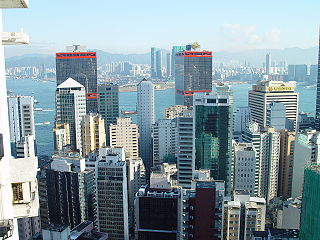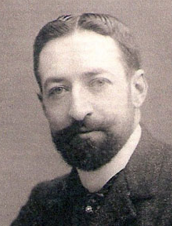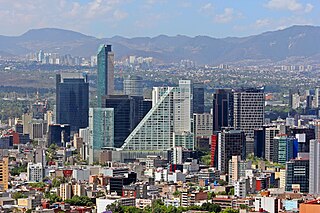
Planning theory is the body of scientific concepts, definitions, behavioral relationships, and assumptions that define the body of knowledge of urban planning. There are nine procedural theories of planning that remain the principal theories of planning procedure today: the Rational-Comprehensive approach, the Incremental approach, the Transformative Incremental (TI) approach, the Transactive approach, the Communicative approach, the Advocacy approach, the Equity approach, the Radical approach, and the Humanist or Phenomenological approach.

Castilla–La Mancha is an autonomous community of Spain. Comprising the provinces of Albacete, Ciudad Real, Cuenca, Guadalajara and Toledo, it was created in 1982. The government headquarters are in Toledo, and its largest city is Albacete.

Tres Cantos is a municipality of Spain located in Community of Madrid.
An urban enterprise zone is an area in which policies to encourage economic growth and development are implemented. Urban enterprise zone policies generally offer tax concessions, infrastructure incentives, and reduced regulations to attract investments and private companies into the zones. They are a type of special economic zone where companies can locate free of certain local, state, and federal taxes and restrictions. Urban enterprise zones are intended to encourage development in deprived neighborhoods through tax and regulatory relief to entrepreneurs and investors who launch businesses in the area.

Moisei Yakovlevich Ginzburg was a Soviet constructivist architect, best known for his 1929 Narkomfin Building in Moscow.

Ciudad Lineal is a district of Madrid, Spain.

Arturo Soria y Mata (1844-1920) was an internationally important Spanish urban planner whose work remains highly inspirational today. He is most well known for his concept of the Linear City. He studied the civil engineer career, but he didn't finish it.

Golden Mile Complex is a high-rise commercial and residential building on Beach Road in Kallang, Singapore, within walking distance to Nicoll Highway MRT station. The building was formerly known as Woh Hup Complex. Prior to collective sale, the complex contained 411 shops and 500 parking spaces. The building is largely an ethnic enclave for the Thai population in Singapore.
Ciudad Jardín Lomas del Palomar is a planned community, part of the partido of Tres de Febrero in Greater Buenos Aires and adjacent to the city of El Palomar. It is served by two railway lines, the San Martín Line and the Urquiza Line, which provide access to the capital about 20 kilometres (12 mi) away.

Ville radieuse was an unrealised urban design project designed by the French-Swiss architect Le Corbusier in 1930. It constitutes one of the most influential and controversial urban design doctrines of European modernism.

Nikolay Alexandrovich Milyutin, alternatively transliterated as Miliutin was a Russian trade union and Bolshevik activist, participant in the October Revolution in Petrograd and Soviet statesman and architect. After the revolution Milyutin held various executive appointments in Soviet Russia related to social security, urban and central planning and finance; reaching that of Commissar of Finance of the RSFSR in 1924–1929. Milyutin is, however, remembered as an urban planner and an amateur architect, author of Sotsgorod concept, and as the editor of Sovetskaya arkhitektura magazine in 1931–1934.

The Ponce Historic Zone is a historic district in downtown Ponce, Puerto Rico, consisting of buildings and structures with architecture that date to the late nineteenth and early twentieth centuries. The zone goes by various names, including Ponce Tradicional, Ponce Centro, Ponce Histórico, and Distrito Histórico.
During the 1920s, Soviet urban planning ideologies established along two competing lines: the urbanist and disurbanist schools. Whilst the proposed form of the city differed between the two ideologies, their visions of social organization for communal living overlapped.
The Battle of Ciudad Universitaria was a belligerent confrontation at the start of the defense of Madrid in the Spanish Civil War. This battle happened in the new campus area of the Ciudad Universitaria from 15 to 23 November 1936 leaving a stable front until the end of the war. The republican militias' objective was "the defense of the capital at all costs", and for that, it was necessary to stop the advance of general Valera's troops and the fall of Madrid. On the other side, the attackers had as an objective to "conquer the city" as fast as possible. The persistence and tenacity of both sides in the battle meant an inflection point on the Spanish Civil War, partly because it was the first time that Franco's troops were stopped. The campus was also one of the most long-lasting confrontation points during the Spanish Civil War. The resistance shown in Madrid raised the morale of other fronts amongst the Gobierno de la República's controlled zone. The end of the battling period on 23 November 1936 was because of a change in strategy on part of the attackers. Between the main characteristics of this confrontation, it is worth mentioning the entrance to battle, for the first time in this war, of the varied troops that belonged to the International Brigades, just like the heavy military material of Soviet origins. The attackers received material and troops from Germany and Italy, being also one of the first times in history in which aerial bombing against the civil population was used.

Madrid is the capital and most populous city of Spain. The city has almost 3.6 million inhabitants and a metropolitan area population of approximately 6.7 million. It is the second-largest city in the European Union (EU), and its monocentric metropolitan area is the second-largest in the EU. The municipality covers 604.3 km2 (233.3 sq mi) geographical area.

Termantia, the present-day locality of Tiermes, is an archaeological site on the edge of the Duero valley in Spain. It is located in the sparsely populated municipio of Montejo de Tiermes.

Lekki is a city in Lagos State, Nigeria. It is located to the south-east of Lagos city. Lekki is a naturally formed peninsula, adjoining to its west Victoria Island and Ikoyi districts of Lagos, with the Atlantic Ocean to its south, Lagos Lagoon to the north, and Lekki Lagoon to its east; however, the city's southeast, which ends around the western edge of Refuge Island, adjoins the eastern part of Ibeju-Lekki LGA.

Mariano Belmás Estrada was a Spanish architect. He was a prominent theoretician of urban planning in Madrid in the late 19th century, particularly in addressing the problem of housing workers as the city modernized and its population grew. He viewed architecture in terms of technical solutions to social problems rather than aesthetics. He was the lead architect in the first year of reconstruction after the 1884 Andalusian earthquake. He was a founder and one of the first architects of the Ciudad Lineal of Madrid, a planned neighborhood. Later he abandoned his youthful idealism and became a successful and respected architect who created eclectic designs of major new buildings and renovations for public and private clients.

Mexico City has massively been expanding its urban fabric and population density, becoming the 5th largest city in the world. A combination of neoliberal policies, complex geographic location, socio-economic disparities and inefficient strategies, have influenced the process of gentrification in the city. The combination of numerous megaprojects and inefficient city-planning strategies have led to dysfunctions in circulation, community allocation and equal access to resources. In consequence, middle and low-income communities have been directly or indirectly alienated and challenged to adapt to a complex and evolving urban environment.
















